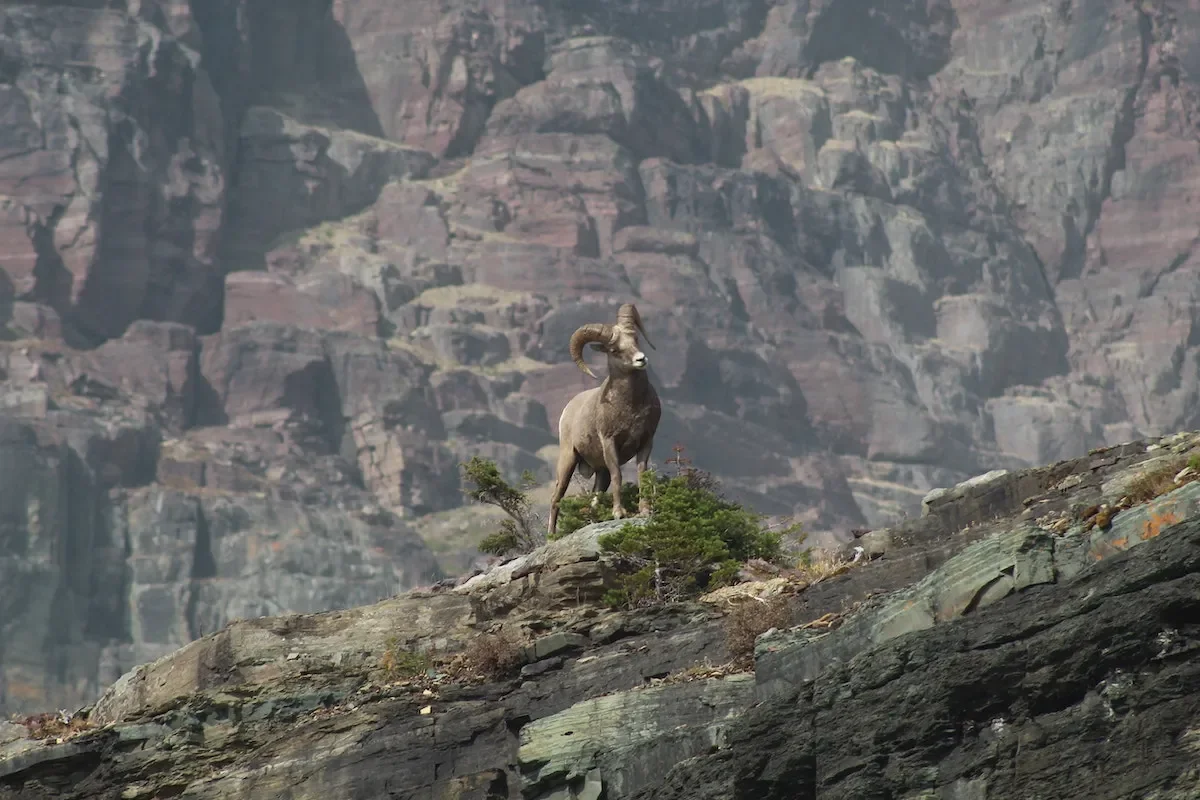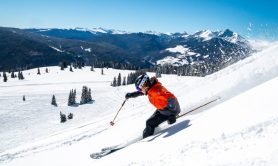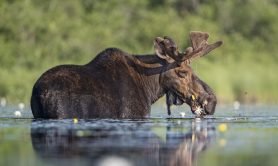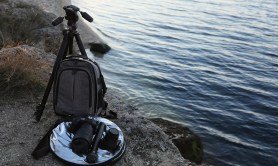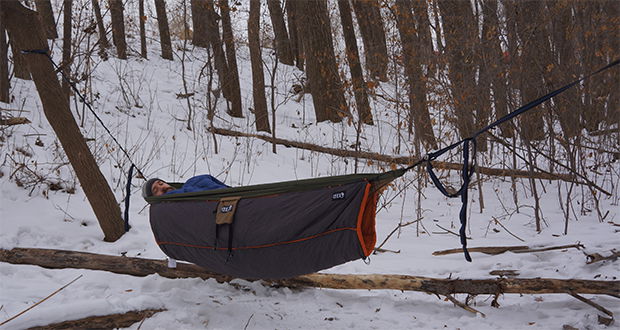

Why would I want to camp in the winter?
Winter camping gets a bad rap. The mere mention of it will get a lot of negative responses:
“I don’t even like summer camping!”
“I don’t like winter to begin with, and you want to sleep outside?”
“That just sounds horrible.”
Here’s a little saying we have around the 50 Campfires office:
There is no such thing as bad weather, only ill-prepared travelers.
This is especially true when it comes to winter camping. If you have the right gear, you’ll have a great time. If not, you’ll be cold and will probably never attempt it again. Even if you have the right gear, why would you want to? That’s easy: there are no bugs, no underbrush (easier hiking), less people, and the forest looks beautiful covered in snow. Being warm and comfortable in the middle of a snow covered forest is a magical experience.
Ok, why would I winter hammock camp?
Um…have you seen the ground? It’s covered in snow! Yes, of course you can camp in a tent in the winter, but why mess with that if you don’t have to? The other benefit is that hammocks are easy to pack. Even with a rain fly you’re looking at something the size of a Nalgene bottle. Also – setup literally takes about a minute.
What do I need?
Winter hammock camping presents a unique problem. That being, how to keep the space underneath you warm. When you lay in a sleeping bag in a hammock the insulation underneath you is compressed, making it useless. There are two options to reflect the body heat underneath you: underquilts and pads. Underquilts are constructed much like a sleeping bag, and hang underneath your hammock. They do an excellent job of containing your body heat, and are the preferred choice for most winter hammock campers. We recently reviewed the Eno Vulcan Underquilt, and found it be awesomely warm.
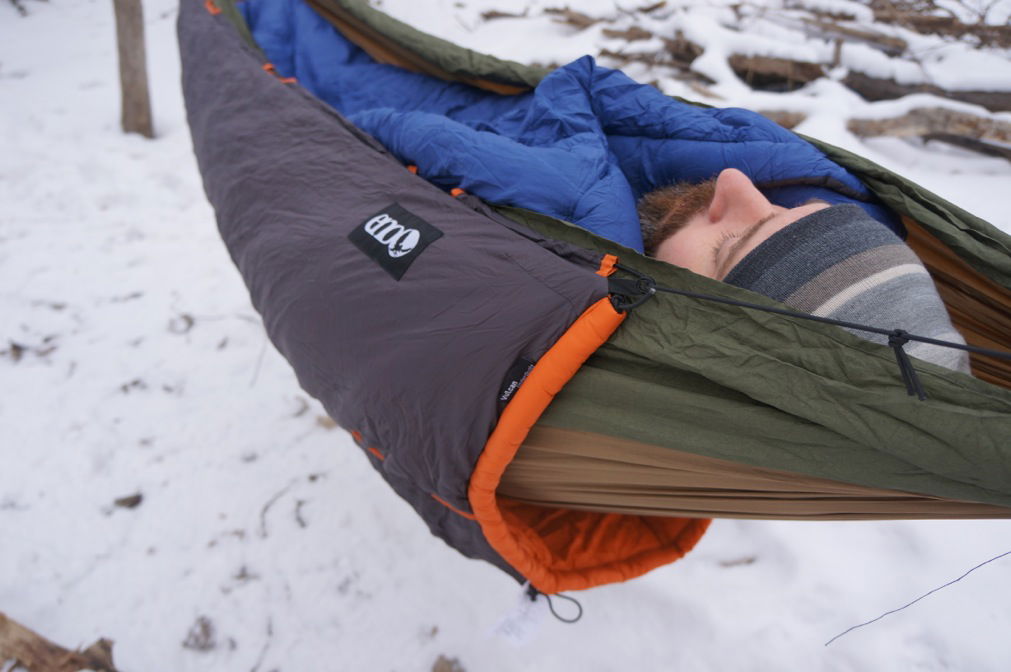
The other option is to lay on a sleeping pad in your hammock. This is a much cheaper option and can work just as well, but can be a little more difficult to implement. Most sleeping mats are about 20″ wide, and that’s a little too thin to function well in a hammock. You’ll be more comfortable and warmer with about 25″ wide. A common solution is to buy an extra large sleeping pad and then trim it in toward the feet. Also, actually getting situated on the pad can be challenging (depending on your style of hammock). Nonetheless, many fans of winter hammock camping swear by the sleeping pad. A good approach is to try the pad first, because it’s cheap. If it doesn’t work well you won’t regret the purchase of an underquilt.
While an underquilt and a sleeping bag can work well, many consider the most comfortable approach to be an underquilt and a topquilt, which is basically a down blanket that has a foot box on one end. This allows you to move around in the hammock unencumbered while remaining warm and comfortable. It also makes it much easier to hop out for a run to the bathroom in the middle of the night. To get more info on topquilts, check out our review of the Eno Vesta Topquilt.
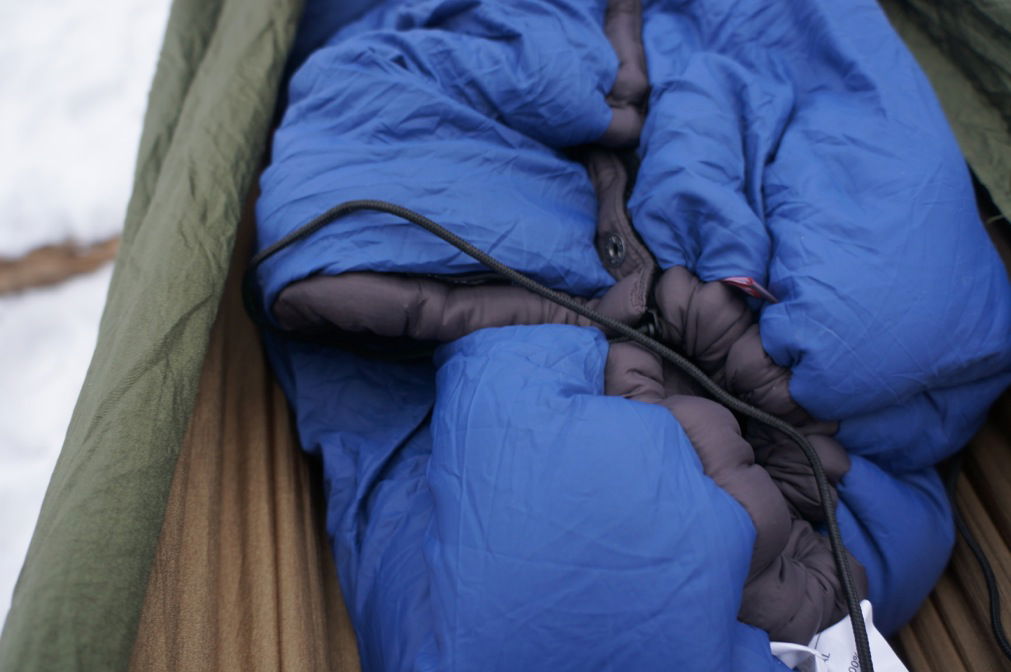
Beyond that, the rest of it is just common sense. Lots of layers, try not to sweat too much, etc. If you’re at all interested in winter hammock camping we’re going to assume that you know how to handle yourself in cold temperatures. Another nice benefit is that your hammock doubles as a place to sit. You can start a small fire a few feet away and have a nice toasty hang. If you want to ramp up your warmth and comfort, consider adding a topquilt.
Where should I go?
The best part about hammock camping is the fact that you don’t need a campsite. You only need two trees! It’s easy to find campsites in the winter if you can find a campground that is open. Hike-in sites are going to be a bit more fun because you’re more secluded. If you’re up for a little more adventure try to find some state forest that allows “dispersed camping.” This means you can just trek out and camp anywhere you want. Hiking around to find a perfect spot is half the fun. Maybe you can find a creek or a ridge, who knows? Take a look at a topo map and do a little exploring. On your first adventure winter hammock camping you’re going to learn a lot, so it’s best if you don’t head too far out, and don’t camp in sub-zero temperatures your first time. Once you start to get the hang of it (pun intended), you’ll see your winter in an entirely different way.
